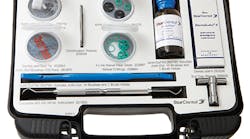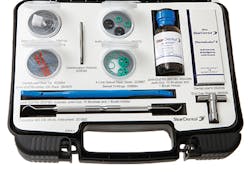Richard E. Gross, MBA
The high-speed dental handpiece is, without a doubt, one of the most commonly used and critical instruments in dental practices. Used in nearly every dental procedure, proper maintenance is essential to ensure that both the handpiece and cutting bur provide optimal performance each time they are used. Due to the variety in frequency, length, and type of use, as well as the hard materials that handpieces are required to cut, proper daily, weekly, and monthly maintenance is critical.
Like family cars that fail without proper preventive maintenance, the handpieces that generate value for your practice require attention and care. The best way to provide the necessary maintenance is to use an ongoing schedule that focuses on both daily routines and ongoing care.
Each practice, depending on the type of handpiece it uses (lube-free or lubricated), already has its own protocol for daily care, asepsis, and sterilization. But has your staff read the manufacturer's instructions to make sure that the recommended care instructions are being followed? Beyond cleaning, lubricating (if necessary), and sterilizing the handpiece after each use, do staff members realize that other measures need to be taken? These steps are required less frequently but are no less critical to ensuring the health of your handpieces.
Because nearly every dental procedure relies on a high-speed handpiece, making sure yours works properly is imperative to the productivity of your practice and the comfort of your patients. No dental professional wants to interrupt a procedure because the handpiece fails to cut properly, whether that's due to a loss of power, a sudden loss of light or water, or a problem with the bur.
Taking some extra time to perform a few basic preventive-maintenance steps on a weekly or monthly basis can eliminate these frustrations and ensure that your operatory runs smoothly and effectively. Make these practical tips part of your daily routine to help prevent common types of handpiece failure.
Basic checklist for handpiece maintenance
• Have you thoroughly read the manufacturer's instruction manual?
• Are you following your manufacturer's recommendations for pressure and sterilization?
- Set the proper pressure of the handpiece at ______ psi.
- Check to ensure the pressure is set properly at the end of the tubing where it connects to the handpiece or swivel. Setting the pressure using the gauge on the delivery unit may not be correct, and you can lose 1 psi per foot of handpiece tubing.
- Ensure that you are following the guidelines and requirements for disinfection and sterilization as described in your operator's manual. Manufacturers follow the guidelines set by the Centers for Disease Control and Prevention and the American Dental Association when establishing their recommendations.
• Length of time: ______ minutes
• Temperature: ______ degrees Celsius
- Do not sterilize with a bur in place.
• Are you allowing the autoclave cycle to complete? Using a handpiece that is not completely cool or attempting to cool the handpiece under water can cause premature failure. If you need to do either of these things because you are in a rush to use the handpiece, you might need additional handpieces. We recommend three handpieces per operatory-one in use, one ready for use, and one being sterilized.
• Is whoever repairs your handpieces using parts produced by the manufacturer? Although they may be more expensive, manufacturer's parts are designed to meet rigid standards for performance and longevity.
• Are you using the manufacturer's supplied tools, such as an end-cap wrench? Using tools that aren't recommended can cause unseen damage and premature failure.
• Are you thoroughly cleaning your handpieces before autoclaving them? Only warm water and alcohol should be used to clean handpieces. Don't forget to pay attention to the fiber-optic glass at the front of the handpiece and inside the back end where it connects to the swivel.
• Are you regularly removing the turbine and cleaning the inside of the handpiece head? Despite handpiece design, water, enamel, and restorative materials can be atomized and drawn into the handpiece head. The material can be baked to the inside of the housing. As the turbine runs over time, this material can break free and damage the turbine. Make sure to periodically remove the turbine and clean the housing with a cotton swab and alcohol. This is particularly important if you replace your own turbine.
• Are you cleaning the turbine chuck regularly? Did you know the same thing could cause a bur to slip or stick? Clean the chuck weekly to maintain proper working condition. Use a small interproximal brush (or similar brush) dipped in alcohol. Insert the brush into the bur tube and rotate the brush several times. Repeat this process until the brush comes out clean.
• Do you know when it is time to replace the turbine? There are a number of signs that your turbine may be failing:- When you spin the bur in the handpiece between your fingers, do you feel grittiness?- Does the handpiece sound different?- Does the handpiece not cut as well as it has in the past-even when you're using a new bur?
• Have you consulted your handpiece manufacturer about whether specialized maintenance support is provided?
Richard E. Gross, MBA, is the senior product manager for StarDental Instrument Solutions and Columbia Dentoform Teaching Solutions, both of which are product categories of DentalEZ, a supplier of integrated products and services for dental professionals. He holds an MBA in health-care administration and has an extensive background in medical device and clinical product development.







